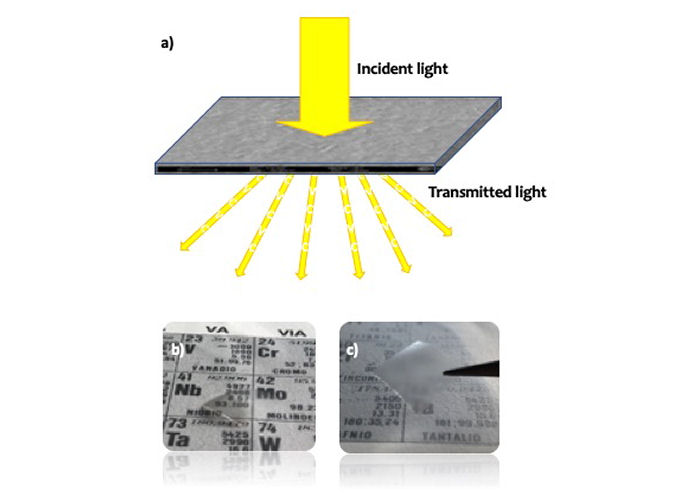 The opaqueness of standard paper originates from the presence of empty spaces among fibers: the presence of air and other fillers yields a material with a discontinuous refractive index. This causes scattering of light in the backward direction and is the reason why we cannot look through a sheet of paper. This limit represents, actually, one of the paper’s most important properties: it is relying on the opaqueness of paper that we are using it for centuries as a substrate for the transmission of knowledge.
The opaqueness of standard paper originates from the presence of empty spaces among fibers: the presence of air and other fillers yields a material with a discontinuous refractive index. This causes scattering of light in the backward direction and is the reason why we cannot look through a sheet of paper. This limit represents, actually, one of the paper’s most important properties: it is relying on the opaqueness of paper that we are using it for centuries as a substrate for the transmission of knowledge.
We cannot be disturbed by the object behind a page of a book or a document, therefore we can read it carefully and undisturbed.
On the contrary, transparency in cellulose nanopaper is one of its most intriguing properties. It arises from the reduced interstice dimension between fibers: the more homogeneous diffraction index deriving from nanopaper composition will minimize backscattering in favor of transmission of light in the forward direction.
In addition to transparency, cellulose nanopaper often presents another fundamental effect, defined as “haze”. Haze is defined as the ratio between the light transmitted through nanopaper (deviated from the incident light beam of an angle above 2.5°) and the total transmitted light intensity. A high haze allows light coupling and responses not depending on the angle of the incident light.1 Haze is tunable on the dependence of the dimension of the nanocelluloses chosen to produce the paper. This property is considered particularly beneficial when the active layer of a solar cell is deposited on cellulose nanopaper since haze can increase the path length of light in the light-harvesting layers.2 The following figure shows in panel a) a representation of what the haze effect consists of. The panel b) shows a nanopaper 1cmx1cm sample placed on a periodic table: transparency, in this case, is the relevant property. The panel c) shows the same nanopaper sample lifted from the surface: as far as the distance with the object behind the nanopaper increases, the haze manifests its effects.
 Figure 1. a) Schematic description of the haze effect on nanopaper. b) Transparency in nanopaper is particularly observed when an object is placed close to the nanopaper. c) Haze in nanopaper is observed on far objects.
Figure 1. a) Schematic description of the haze effect on nanopaper. b) Transparency in nanopaper is particularly observed when an object is placed close to the nanopaper. c) Haze in nanopaper is observed on far objects.
References. 1 Y. Yao, J. Tao, J. Zou et al., “Light management in plastic-paper hybrid substrate towards high-performance optoelectronics,” Energy & Environmental Science, 2016, 9, 2278–2285. 2 Z. Fang, H. Zhu, W. Bao, et al., “Highly transparent paper with tunable haze for green electronics,” Energy & Environmental Science, 2014, 7, 3313–3319.
Copyrights of this article belong to Alessandra Operamolla. All rights reserved.
